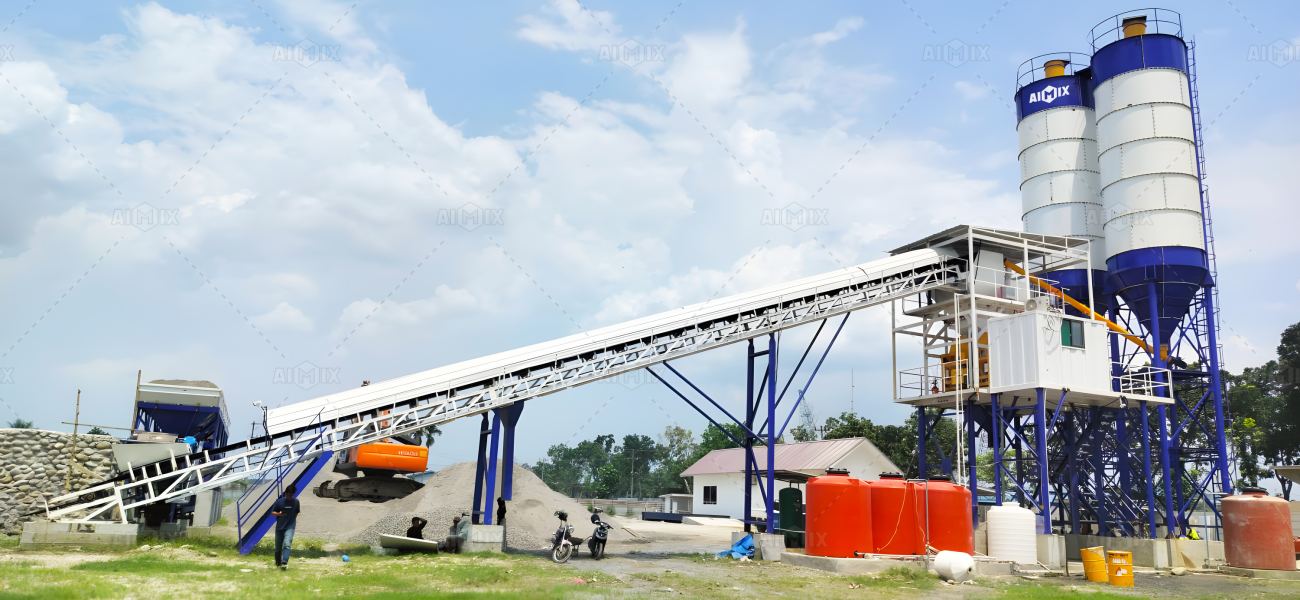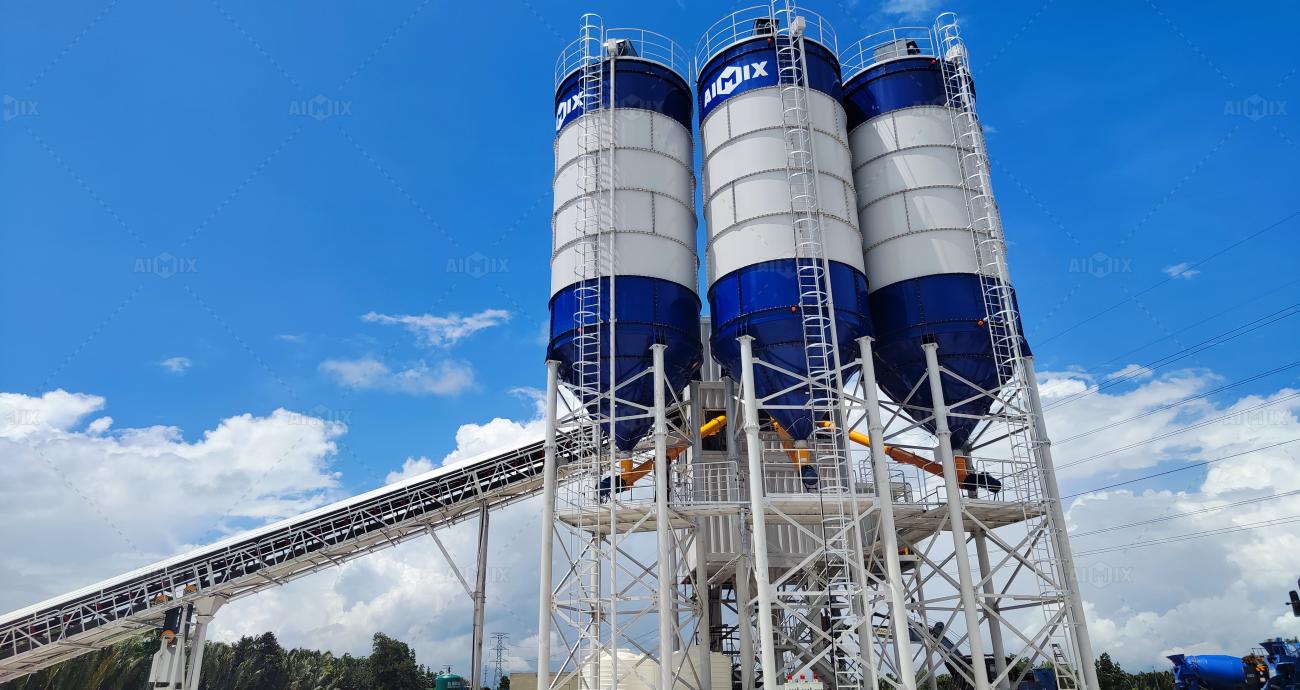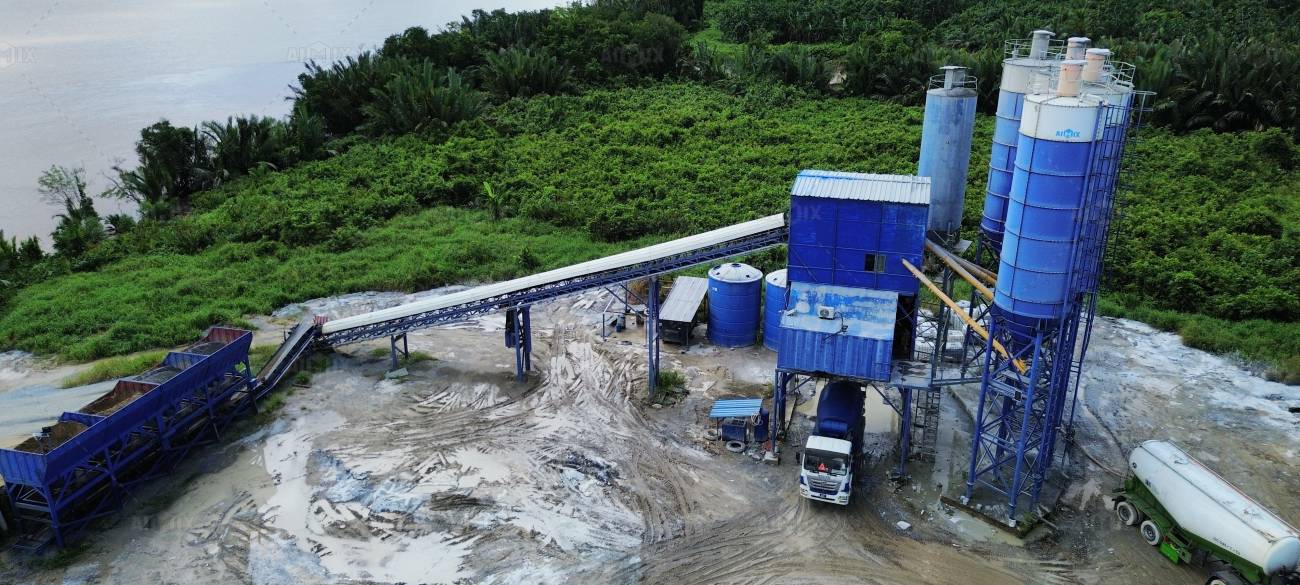In the world of modern construction, stationary batching plants play a critical role in producing high-quality concrete with precision and consistency. Whether it’s for roadways, commercial buildings, or infrastructure projects, these plants are at the heart of every successful concrete operation. However, while they offer unmatched productivity and performance, safety at the job site remains a top priority. This article explores essential safety protocols and operational best practices for stationary batching plant, with insights that are also applicable to RMC concrete plants, concrete mixer plants for sale, and facilities designed by leading China concrete batching plant manufacturers.

Why Safety Is Critical in Stationary Batching Plants
Stationary batching plants are complex systems that combine mechanical, electrical, and software-controlled components. These include cement silos, aggregate bins, conveyors, mixers, control panels, and water dosing units. When any of these components malfunction or are handled improperly, the results can be serious—ranging from equipment damage to worker injury or even fatality.
Implementing strict safety protocols ensures:
-
Worker protection from hazards
-
Reduced downtime and repair costs
-
Compliance with regulatory standards
-
Sustained plant productivity and efficiency
Pre-Operational Checks and Daily Inspections
Before starting operations, plant operators must conduct thorough inspections of all mechanical and electrical components. This includes:
-
Checking all sensors, belts, and hoppers for proper alignment and cleanliness
-
Verifying that the mixer and conveyor motors are functioning normally
-
Ensuring safety barriers and emergency stops are in place and functional
-
Inspecting silos for any blockages or overpressure conditions
These pre-operation checks are particularly important for RMC concrete plant, where continuous and uninterrupted batching is expected throughout the day.
Personal Protective Equipment (PPE) for Workers
Every worker at the site must be equipped with the proper PPE. Depending on the plant’s size and setup, this may include:
-
Helmets to protect against falling objects
-
Ear protection to reduce noise exposure near mixers
-
Dust masks or respirators around cement and aggregate loading areas
-
Gloves and safety boots to reduce injury risk from sharp or hot surfaces
This applies whether you are operating a traditional stationary batching plant, a China concrete batching plant, or a high-capacity concrete mixer plant for sale anywhere globally.

Mixer Safety and Lockout Procedures
The concrete mixer is the most active and dangerous part of any batching plant. Workers must never enter the mixer chamber without following strict lockout/tagout procedures. This includes:
-
Turning off the main power supply
-
Placing a warning tag on the switchboard
-
Having a supervisor confirm that all electrical circuits are de-energized
Most modern plants—including those from leading China concrete batching plant manufacturers—offer automated locking systems to prevent access when the mixer is in operation. Nonetheless, proper human oversight is irreplaceable.
Material Handling and Storage Safety
Improper storage of aggregates, cement, and chemical additives can lead to cross-contamination, spillage, or even fire hazards. Best practices include:
-
Keeping storage areas clearly labeled and organized
-
Using sealed silos for cement to prevent dust emissions
-
Ensuring aggregates are stored on concrete pads to avoid contamination from soil or debris
-
Following handling guidelines for chemical admixtures to prevent skin or respiratory exposure
Plants manufacturing RMC concrete must be especially cautious, as any contamination can affect the structural integrity of the final product.
Automated Control Systems and Emergency Protocols
Automation in batching plants has revolutionized safety and efficiency. Most modern stationary batching plants come equipped with advanced PLC or SCADA-based control panels that:
-
Monitor real-time data (temperature, moisture, load weight)
-
Auto-correct batching ratios
-
Trigger alarms for faults or anomalies
-
Shut down processes during overload or emergency situations
However, workers must still be trained on manual overrides and emergency stop procedures in case of software failure or network issues.

Regular Maintenance and Staff Training
Preventive maintenance is vital to plant safety. Regular schedules should include:
-
Lubrication of moving parts
-
Cleaning of sensors and weighing systems
-
Calibration of load cells and dosing systems
-
Electrical system testing and insulation checks
In addition, all staff—including new hires—should undergo safety training, which covers:
-
Basic operation of batching equipment
-
Emergency evacuation routes
-
Handling hazardous materials
-
First aid and fire safety procedures
This is especially important in countries like Bangladesh, where rapid construction growth is increasing demand for trained personnel to operate RMC concrete plants and concrete mixer plants for sale.
Site Layout and Accessibility Planning
Poor layout can lead to congestion, accidents, and inefficiencies. A well-designed plant layout should:
-
Separate vehicle movement from pedestrian paths
-
Include clear signage and directional markings
-
Allow easy access for maintenance personnel
-
Ensure proper lighting and visibility in all working areas
Whether you’re running a large stationary batching plant or a smaller RMC concrete facility, these considerations can significantly reduce onsite risks.
Conclusion
As the demand for high-performance concrete solutions continues to grow, ensuring the safety of workers and equipment becomes non-negotiable. From pre-operation checks to emergency protocols, following these best practices in your stationary batching plant operation not only enhances safety but also boosts overall efficiency and product quality. Whether you’re managing an RMC concrete plant, exploring a concrete mixer plant for sale, or working with a China concrete batching plant supplier, prioritizing safety ensures long-term operational success in any construction project.